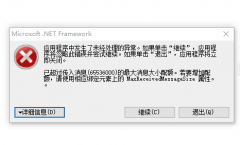.NET Experiences
Description:
.NET Experiences are XML Web services that allow you to access information across the Internet and from standalone applications in an integrated way that saves you time and money. Microsoft will deliver .NET Experiences for individuals and for businesses. Some of the products that Microsoft is transitioning into .NET Experiences are MSN? bCentral? and Visual Studio .NET.Links:
------------------------------------------------------------------------------------------
Clients
Description:
Clients are PCs, laptops, workstations, phones, handheld computers, Tablet PCs, game consoles, and other smart devices.燱hat makes these devices 搒mart?is their ability to access XML Web services. Smart clients use software that supports XML Web services, and enable you to access your data regardless of the location, type, and number of clients you use. Some of the .NET client software Microsoft will offer are: Windows CE, Windows Embedded, Window 2000, and the upcoming Windows XP. This software will power PCs, laptops, workstations, smart phones, handheld computers, Tablet PCs, and XBox game consoles.
Links:
------------------------------------------------------------------------------------------
Services
Description:
In addition to developers creating XML Web services, Microsoft is creating a core set of building block services that perform routine tasks and act as the backbone for developers to build upon.?The first set of XML Web services being built, codenamed 揌ailStorm? is user-centric services oriented around people, rather than specific devices, networks, or applications.?揌ailStorm?is based upon the Microsoft Passport user authentication system.?With 揌ailStorm? users receive relevant information, as they need it, delivered to the devices they抮e using, and based on preferences they have established.
Web sites vs. XML Web services
Web sites are about presenting information to a user: they are the communication vehicle for servers to talk to users. XML Web services offer a direct means for applications to interact with other applications. Applications hosted internally, as well as on remote systems, can communicate via the Internet by using XML and SOAP messages.
Links:
------------------------------------------------------------------------------------------
Servers:
Description:
The .NET Enterprise Servers, including the Windows 2000 server family, make up Microsoft .NET's server infrastructure for deploying, managing, and orchestrating XML Web services. Designed with mission-critical performance in mind, they provide enterprises with the agility they need to integrate their systems, applications, and partners through XML Web services, and the flexibility to adapt to changing business requirements. The .NET Enterprise Servers are:
- Application Center 2000 to deploy and manage highly available and scalable Web applications;
- BizTalk?Server 2000 to build XML-based business processes across applications and organizations;
- Commerce Server 2000 for quickly building scalable e-commerce solutions;
- Content Management Server 2001 to manage content for dynamic e-business Web sites;
- Exchange Server 2000 to enable messaging and collaboration, anytime, anywhere;
- Host Integration Server 2000 for bridging to data and applications on legacy systems;
- Internet Security and Acceleration Server 2000 for secure, fast Internet connectivity;
- Mobile Information 2001 Server to enable application support by mobile devices like cell phones;
- SharePoint Portal Server 2001 to find, share, and publish business information; and
- SQL Server?2000 to store, retrieve, and analyze structured XML data.
Links:
- .NET Enterprise Servers Web site
- TechNet Web site
- Books about .NET from the Microsoft Press Web site
- Training on .NET from the Training and Certification Web site
------------------------------------------------------------------------------------------
Tools
Description:
Visual Studio .NET and the Microsoft .NET Framework supply a complete solution for developers to build, deploy, and run XML Web services. They maximize the performance, reliability, and security of XML Web services.
Visual Studio .NET is the next generation of Microsoft's popular multi-language development tool, built especially for .NET. Visual Studio .NET helps developers quickly build XML Web services and applications that scale easily, using the language of their choice. Visual Studio.NET advances the high-productivity programming languages Visual Basic? which includes new object oriented programming features; Visual C++? which advances Windows development and enables you to build .NET applications; and C#, which brings RAD to the C and C++ developer.
The .NET Framework is a high-productivity, standards-based, multi-language application execution environment that handles essential plumbing chores and eases deployment. It provides an application execution environment that manages memory, addresses versioning issues, and improves the reliability, scalability, and security of your application. The .NET Framework consists of several parts, including the Common Language Runtime, a rich set of class libraries for building XML Web services, and ASP .NET.
Links:
- Visual Studio .NET Web site
- MSDN's Developer Center for .NET
- Books about .NET from the Microsoft Press Web site
- Training on .NET from the Training and Certification Web site
--------------------------------------------------------------------------------







